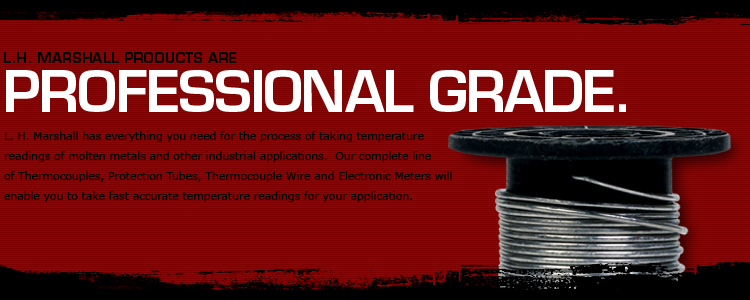| Common Materials Protection Tube |
| Materials* |
Characteristics |
| Type 304 |
Up to 1650 F (900 C) under oxidizing conditions. Has generally good oxidation and corrosion resistance in a wide range of industrialenvironments. Subject to carbide precipitation, which can reduce corrosion resistance, in the 800-1000 F (430-540 C) range. Good Mechanical properties from - 300 to 1450 F ( - 185 to 790 C). Main areas of usage: chemicals, foods, plastics, petroleum. Generally regarded as a standard protection tube material. |
| Syalon |
|
| Type 310 |
Up to 2100 F (1150 C) under oxidizing conditions. Power plant boiler tubes to 1800 F (980 C) are main area of application. |
| Type 316 |
Up to 1700 F (930 C) under oxidizing conditions. Same areas of application as type 304, plus improved resistance to acid and pitting corrosion |
| Type 446 |
Up to 2000 F (1090 C) under oxidizing conditions. Excellent high temperature corrosion and oxidation resistance. Main areas of application are hardening, nitriding, and annealing furnaces: salt baths, molten lead; tin and babbitt metal-, sulfurous atmospheres.
Not for carburizing atmospheres. Other areas are steel soaking pits, tinning pots, waste heat boilers, ore roasters, cement exit flues, boiler tubes to 1800 F (980 C), asphalt mixing incinerators to 2000 F (1090 C), glass tank flues. |
| Inconel 600 |
Up to 2100 F (1150 C) under oxidizing conditions. Reducing conditions lower maximum temperature to 1900 F (1040 C). Must not be placed in sulfurous atmospheres above 1000 F (540 C). Main areas of application. carburizing, annealing, and hardening furnaces, cyanide salt baths; blast furnace downcomers; open hearth fluestacks, steel soaking pits, waste heat boilers-, ore roasters-, cement exit flues-, incinerators, glass tank flues. |
| Inconel 601 |
Similar applications to Inconel 600, but with superior resistance to sulfur and high temperature oxidation resistance to 2300F(1260C). |
| Incoloy 800 |
Up to 2000 F (1090 C) in oxidizing conditions. Similar to Inconel, but less suitable in nitriding and molten caustics. Superior resistance to sulfur than Inconel 600. |
| Kanthal A-1 |
Up to 2300 F (1260 C) in oxidizing conditions. Good hightemperature sulfur resistance. Free halogens and alkalis, or their compounds, reduce corrosion resistance severely. |
| Nickel |
Up to 2100 F (1150 C) under oxidizing conditions. Must not be placed in presence of sulfur above 1000 F (540 C). Main areas of application are potassium cyanide salt baths, brines, caustics, high temperature chemical exposure. |
| Carbon steel (C1018) |
Up to 1000 F (540 C) in nonoxidizing environments. Main areas of usage are galvanizing pots, tinning pots, molten babbit metal, molten magnesium, molten zinc, petroleum refinery applications such as dewaxing and thermal cracking. |
| Low alloy steel (Yoloy) |
Up to 1250 F (680 C) in noncorrosive environments. Somewhat superior to carbon steel; replaces wrought iron. Areas of application are annealing furnaces to 1250 F (680 C), ovens, ceramic dryers, glass tank flues. |
| Cast iron |
Up to 1300 F (700 C) in oxidizing conditions. Main area of usage is in molten nonferrous metals: daily whiting is recommended. Can be used to 1600 F (870 C) under reducing conditions. |
| Metal ceramic (LT-1) |
Up to 2500 F (1370 C) in oxidizing conditions. Main areas of usage are molten copper-base alloys to 2100 F (1150 C), blastturnace and stack gases to 2400 F (1315 C), sulfur burners to 2000 F (1090 C), cement kilns to 2200 F (1200 C), chemical process reactors to 2500 F (1370 C). A ceramic primary tube is required when noble metal thermocouple is used. |
| Mullite (63% alumina) |
Up to 2750 F (1510 C). Has poUp to 3200 F (1760 C). Has only fair resistance to thermal and mechanical shock. Essentially same areas as mullite, including
induction melting, vacuum furnaces.or mechanical shock resistance and good thermal shock resistance. For barium chloride salt baths to 2350 F (1290 C), Should be vertically mounted or supported if horizontal. For high temperature applications of ceramic industry, heat treating, glass manufacture. |
| Alumina (96%) |
Up to 3200 F (1760 C). Has only fair resistance to thermal and mechanical shock. Essentially same areas as mullite, including induction melting, vacuum furnaces. |
| Alumina (99.5%) |
Applications similar to alumina (96%); can be used to 3400 F (1870 C) when properly supported. |
| Silicon carbide |
Up to 3000 F (1650 C). For a secondary protection tube with alumina or mullite primary tube. For brick and ceramic kilns, steel soaking pits, molten nonferrous metals. Can withstand direct flame impingement. |
| Quartz |
Up to 2000 F (1090 C). Excellent resistance to thermal shock. For molten gold and silver. |
*In addition to the metallic and ceramic materials listed above, certain plastic coatings, such as Teflon (DuPont), provide corrosion resistance in numerous chemicals and environments.
Note: This information should not be considered as a guarantee of adequate or successful use of any of the listed materials in any specific application; it is offered only as a general guide. Numerous variables such as impurities, concentration, temperature cycling, vibration, etc., will affect service given by these materials.
Inconel and Incoloy are trade names of International Nickel Go. Inc.; Kanthal, Kanthal Corp.; and Yoloy, Youngstown Sheet & Tube Co. |



